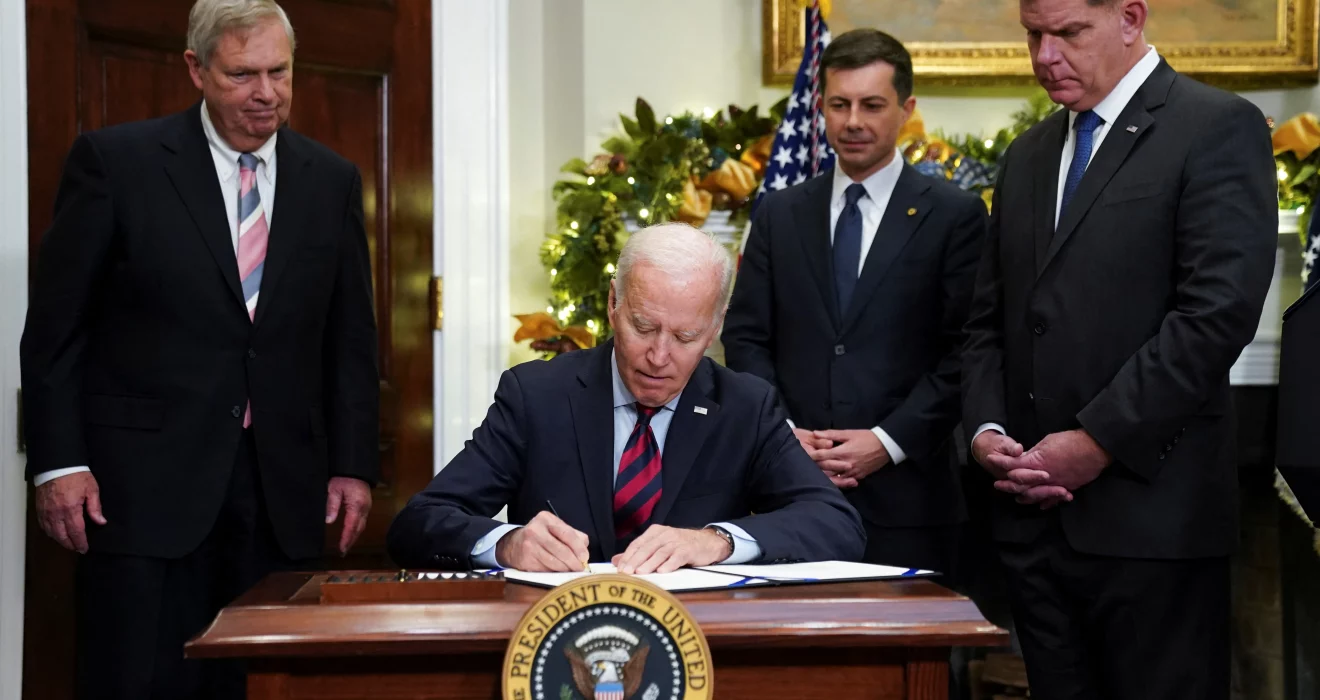In a momentous reversal of environmental policy, the Biden administration is taking strides to reinstate crucial rules under the Endangered Species Act, aiming to fortify protections for imperiled plants and animals. This initiative seeks to overturn alterations implemented during the Trump presidency, which faced criticism for undermining the efficacy of the renowned environmental safeguard. As discussions intensify about the potential ramifications of these proposed changes, the intricate dance between conservation, industry interests, and broader implications for biodiversity and habitat preservation comes into sharp focus.
The Endangered Species Act has long been a cornerstone of wildlife conservation, credited with rescuing iconic species from the brink of extinction. However, the Trump administration’s revisions sparked controversy, prompting concerns about the prioritization of economic interests over environmental well-being. Now, the Biden administration’s move to reinstate key provisions sets the stage for a renewed commitment to conservation efforts.
Blanket Protections: Restoring the Baseline for Threatened Species
A pivotal facet of the proposed changes is the reinstatement of a regulation mandating blanket protections for species newly classified as threatened. The rationale behind restoring this baseline, with a specific focus on the Southeast, unraveling the potential positive impact on imperiled fish and freshwater mussels. By understanding the nuances of these restored protections, we gain insights into how they act as a critical safeguard, offering a lifeline to species teetering on the edge of endangerment.
Industry Backlash and Political Resistance
In anticipation of resistance, this section navigates the expected pushback from Republican lawmakers who assert that the Biden administration is obstructing industries like oil, gas, and coal. Unraveling the intricacies of the political landscape, the article analyzes how conservation initiatives are often viewed as impediments to economic development. Insights from prominent figures, including House Natural Resources Committee Chairman Bruce Westerman, shed light on the ideological divide surrounding environmental policies. As the narrative unfolds, it becomes evident how the clash between conservation efforts and economic interests shapes the discourse, revealing the challenges inherent in striking a balance between environmental stewardship and economic imperatives.
Revisiting the Legacy of Trump-era Rollbacks
Embarking on a reflective journey, this section delves into the environmental legacy left by the Trump administration, providing crucial context for evaluating the proposed changes by the Biden administration. The examination focuses on the far-reaching consequences of Trump’s decisions, particularly the rollback of protections for emblematic species like the northern spotted owl and gray wolves. It underscores the enduring influence of policy decisions on the trajectory of conservation efforts. This retrospective analysis illuminates not only the environmental impact of Trump-era rollbacks but also the intricate interplay between policy decisions and the ongoing struggle to preserve biodiversity in the face of evolving political landscapes.
The Role of Economic Considerations in Wildlife Decisions
In the intricate dance between commerce and conservation, the role of economic considerations in wildlife decisions emerges as a longstanding and contentious issue. While acknowledging the importance of economic interests, the article probes the delicate equilibrium required to harmonize these concerns with the urgent need to safeguard endangered species. The debate extends beyond a simple dichotomy, exploring the nuanced terrain where economic vitality and biodiversity conservation intersect. As conservation measures face scrutiny and potential pushback from industries, it examines the complexities inherent in finding a sustainable middle ground that ensures the welfare of both ecosystems and economies.
Delayed Action and Lingering Concerns
As environmentalists applaud the Biden administration’s proposed resurrection of vital protections within the Endangered Species Act, a shadow of frustration looms over the prolonged timeline of these actions. Critics argue that the delay in rectifying Trump-era rollbacks raises questions about the commitment to pressing environmental issues. The urgency of addressing habitat loss, biodiversity decline, and the imminent threats to imperiled species is more pressing than ever. The fear that a new administration post-2024 could potentially reverse or dilute these proposed changes adds to the urgency. Environmental advocates emphasize the need for swift, decisive action to fortify the resilience of ecosystems and ensure the efficacy of conservation measures.
Conclusion
As the Biden administration moves to resurrect crucial protections under the Endangered Species Act, the delicate interplay between conservation and industry interests remains a focal point. The proposed reinstatements are met with anticipation from environmental advocates, aiming to safeguard imperiled species and their habitats. However, amidst this positive momentum, lingering concerns persist about potential pushback from Republican lawmakers and industry groups.
Achieving a harmonious balance between economic development and ecological preservation will undoubtedly be an ongoing challenge. The fate of these proposed changes underscores the broader global conversation on environmental stewardship. In the quest for a sustainable future, the efficacy of such policies will determine our ability to protect biodiversity, mitigate habitat loss, and confront the pressing challenges of a rapidly changing planet.

